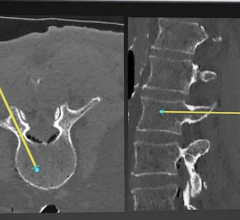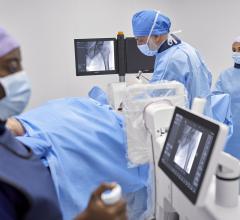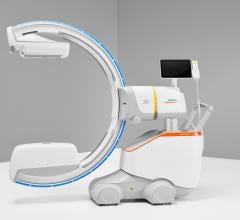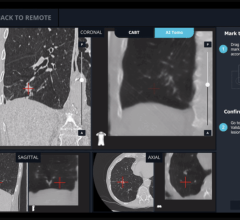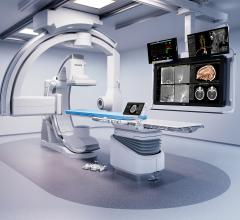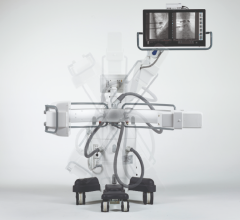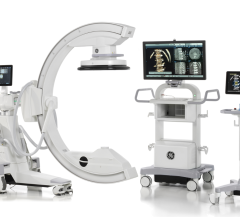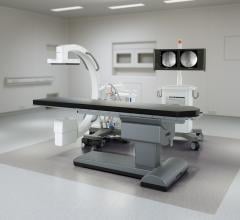As healthcare and radiology continue to evolve rapidly, flexibility in the operating room (OR) and imaging lab are key. Consequently, imaging systems need to be versatile as well as able to handle a variety of applications and adapt to any space. These needs have led to the increasing popularity of mobile C-arms, the latest generation of X-ray technology. Today, they are being adapted to handle fluoroscopy, vascular imaging, cardiology and 3-D imaging.
With this inherent adaptability, hybrid ORs are some of the most common places to find a mobile C-arm. They also offer a less expensive alternative to most fixed angiography systems, being smaller and more portable.
Aside from a lower price point, there are a number of elements that make mobile C-arms an attractive option.
Easy to Handle
One of the greatest advantages of mobile C-arms is their ability to move around the patient, achieving the optimum angle for a high-quality image while keeping the patient comfortable. The newest models offer a variety of features geared toward easy movement and positioning, such as motorized axes. The Ziehm Vision RFD Hybrid and RFD 3D are the first mobile C-arms to offer four motorized axes, giving the surgeon total control through a dual-joystick system.
Precision is important, both for image quality and patient safety, and with so much mobility, it could be difficult to return to a previous position. That’s why several vendors now include position memory features, which allow the C-arm to remember and store its current alignment. If the operator wants to return to that position, they simply call up the data and can see at a glance exactly how to place the machine. Models from both Ziehm and Philips can store up to three positions at a time for quick, easy interchange.
In many cases, though, a technologist will be on hand to manipulate the C-arm at the surgeon’s direction. To facilitate better communication between them, several models now include reference features, like the color-coded axes on Ziehm’s Vision line. Philips’ newest C-arm, the Veradius Unity, adds reference numbers directly on the unit for even more precise repositioning.
The Magic Touch
With the proliferation of tablets and smartphones on the market, imaging machines are starting to utilize touch-screen interfaces, including mobile C-arms. With the touch of a finger, users can change imaging functions, adjust the area and level of focus and, in the case of the Veradius Unity, even draw directly on the screen to highlight a particular section.
Ziehm employs touch-screen technology with the Solo Portable, designed for use in smaller ORs. The flat screen monitor is mounted directly to the C-arm, reducing the footprint even further and allowing for easy breakdown and transport. The Solo Portable is not approved for sale in the United States.
The Digital Revolution
In order to compete with the high image quality provided by fixed angiography systems, many mobile C-arms are beginning to switch over to flat panel digital detectors from traditional image intensifiers. The flat panels offer several advantages over their predecessors. The primary benefit is that they offer higher image quality at a lower radiation dose. Digital operation means there are no electronic components to potentially distort the captured image. They also offer a wider field of view than image intensifiers, in some cases as much as a 16 cm edge length, significantly decreasing radiation dose. In addition, the flat panel detectors take up less peripheral space than the bulky image intensifiers, opening up more room to maneuver around the patient and helping to make them more comfortable.
Two for One
Biplane systems capture horizontal and vertical views simultaneously, minimizing the need for repositioning. Swedish company Scanflex Healthcare Group specializes in biplane mobile C-arms and is preparing to introduce its Biplanar 600 model, which offers rotation-free orthogonal anterior-posterior/lateral-medial (AP/LM) image capture with one push of a foot pedal to the United States. This results in shorter operating times, which means a smaller radiation dose to the patient. The Biplanar 600 employs flat panel digital detectors, joining the likes of Siemens’ Axiom Artis dBC.
Stay Cool
As with any other X-ray imaging device, mobile C-arms generate a significant amount of heat and must be kept cool. Traditionally, cooling systems have been air-based with a fan pushing cool air through the unit. Ziehm, however, has begun implementing liquid cooling in its newest models. The cooling gel is stored inside the X-ray unit and pushed up through the component, passing through a heat exchanger. This prevents the C-arm from overheating, even remaining cool to the touch. As an added bonus with Ziehm’s Advanced Active Cooling, the system notes when the temperature is rising and slows the pulse rate, allowing continuous imaging while the unit cools down. Liquid cooling also provides advantages in terms of space and noise: The tubing takes up much less space within the C-arm than a fan unit and is significantly quieter.
Related Articles on Mobile C-arm Technology Trends
Mobile C-arms Enhancing Flexibility
New C-Arm Meets Medical Center’s Needs for Imaging Quality, Lower Dose
Mobile C-Arm Hybrid OR Solutions
Reference:
1. Nyanue W, “Trends in Mobile C-Arms.” Imaging Technology News, April 2014. http://www.itnonline.com/article/trends-mobile-c-arms. Accessed Jan. 20, 2015.

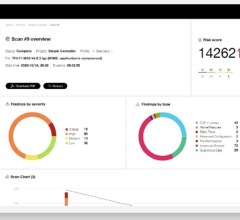
 June 19, 2024
June 19, 2024 
